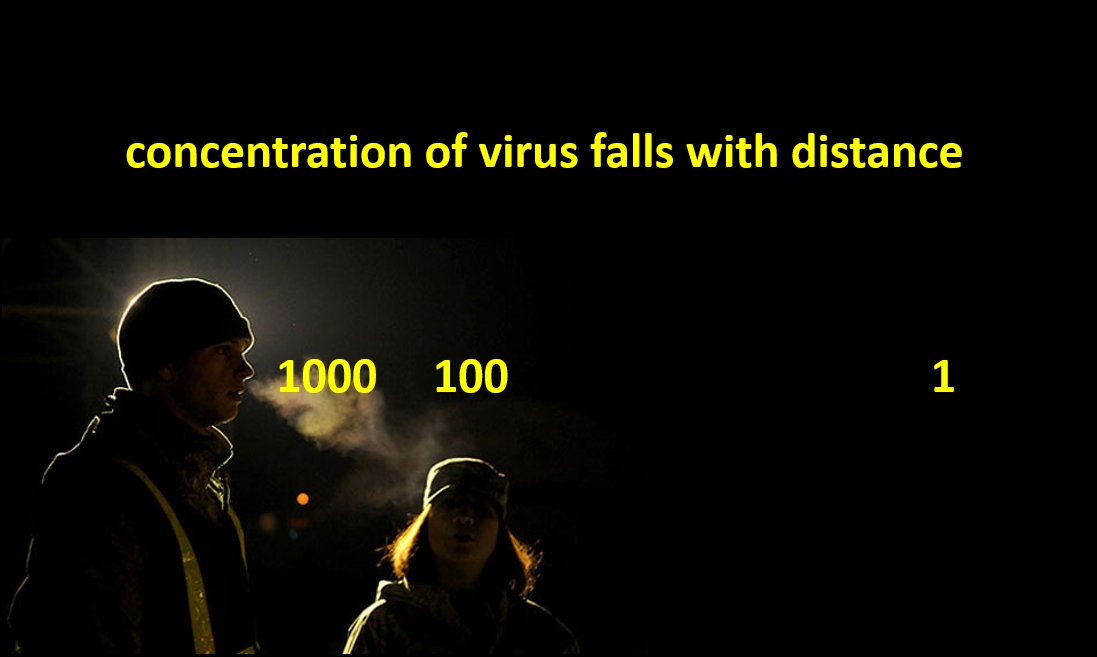Let& #39;s talk about #airborne transmission of #SARSCOV2 and other viruses. A discussion is needed to improve accuracy and reduce fear associated with the term. /1
The virus can be released into the air through coughing, sneezing, talking, and breathing. Some people release more than others. /2
The virus is in droplets that range in size from smaller than we can see to large ones that fall to the floor quickly. There is no hard cutoff between "aerosols" and "droplets". /3
At close range (imagine a breath cloud on a cold day), the concentration of airborne virus will be quite high. As you get farther from the source, the concentration falls off rapidly. /4
If you are close, you are much more likely to inhale the virus. You are also more likely to be sprayed by large droplets that land on your face, which doesn& #39;t happen if you& #39;re farther away. /5
Viruses in small droplets can float around in air for many hours, but they will likely be quite diluted unless you& #39;re in a small confined space. You could inhale these, but it& #39;s much less likely than if you& #39;re close to the person. /6
Airborne viruses will eventually settle on surfaces, like the floor and tables, and could be picked up if someone touches them. However, their ability to survive varies with temperature, humidity, and surface material. /7
They decay gradually over hours or days. It& #39;s not like they all stick around for 9 days and then, poof, suddenly disappear. Think of them as fading away. /8
I should have used cigarette smoke as a better analogy than a breath cloud because smoke has particles that stick around and fall onto surfaces. Tiny water droplets in a breath cloud eventually evaporate into the gas phase. /9

 Read on Twitter
Read on Twitter


